It’s relatively easy to pick a fork that fits your bike. Even with all the various different standards all it takes is a quick sift of the spec info.
There are loads of different suspension forks out there. Nowadays it’s not really a case of good ones and bad ones. Essentially you need to know what fork steerer type your bike frame accepts, what wheel size it takes and what wheel axle type your front wheel takes.
Steerer types
As with bike frame head tubes, the vast majority of fork steerers come in two sizes: 1 1/8th and tapered.
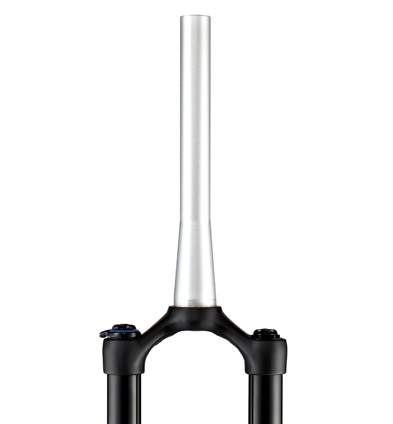
Tapered steerer
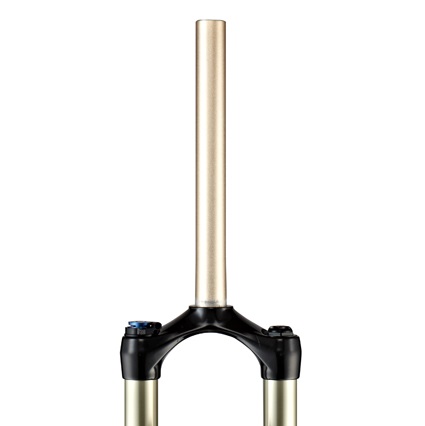
1 1/8th steerer
Tip: you can run 1 1/8th steerer forks in tapered head tube bikes. But you will need to buy a special adapting headset.
Wheel sizes
Mountain bike forks come in three wheel sizes: 26in, 27.5/650B and 29in.
If you have 27.5/650B or 29in wheels then you need the corresponding size fork.
Tip: if you have 26in wheels you can use 26in size forks (obviously) but you can also get away with running a 27.5/650B fork without messing up your bike’s handling significantly.
Wheel axle types
Fork axles come in three sizes: 9mm QR, 15mm bolt-thru and 20mm bolt-thru.
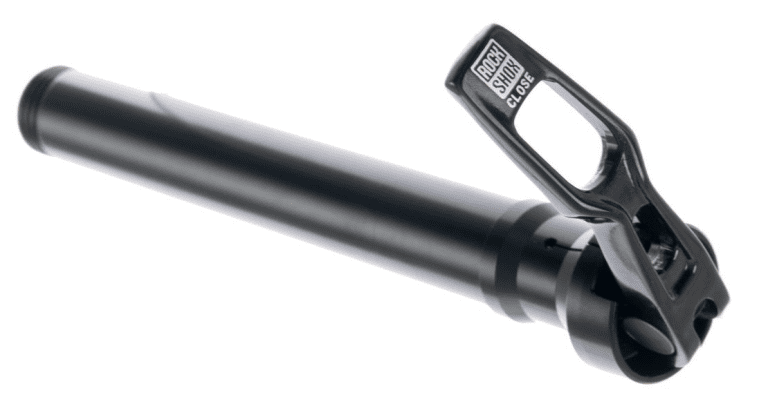
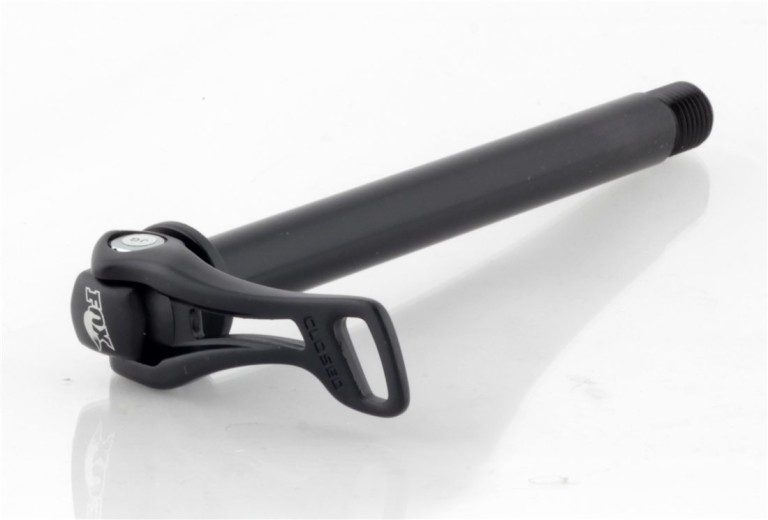

Tip: if you’re shopping around for a front wheel too then it’s worth thinking about getting one that has a hub that can be converted to take any axle type available. Hope hubs are a good bet here.
 Disc brake mount
Disc brake mount
A third aspect is disc brake mount. Forks are either post mount or I.S.
You shouldn’t choose a fork based on what your current brakes’ mount is though. You just need to be aware of it and buy a suitable adapter if one is required.
Once you know you’re steerer type, wheel size, axle type and brake mount you can quickly filter out forks that won’t fit and forks that will.
What isn’t so easy and black-and-white is choosing a fork that suits your bike and suits your needs.
Here’s what to think about…
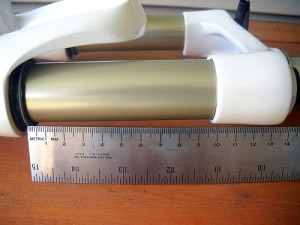
Travel
The amount of suspension movement the fork has. Your bike frame is designed to handle at its best with a specific amount of suspension travel. To keep your bike from going weird and sketchy you need to stay within the same sort of travel that the frame is designed around. Don’t put a 140mm fork on a bike intended to have 100mm.
You can get forks with adjustable travel but bear in mind that they generally perform best when set at their longest setting. The idea of adjustable travel forks is to adjust them down in travel for steep climbs and have them at full length for the rest of the time.
Features
Once you’ve got your travel sorted it’s then time to consider the fork’s features and adjustability.
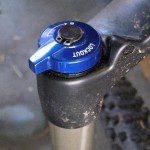
Lock-out
Fork lock-out is actually worth having on a cheaper fork because the damping will be on the basic side and consequently a bit bouncy during climbs (“bobbing”).
Lock-out on more expensive forks isn’t so necessary because the dampers in expensive forks are usually pretty good at reducing bob anyway. Lock-out shouldn’t be needed on a fork that has sophisticated damping inside it.
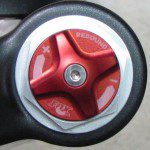
Rebound damping
Rebound damping controls how your fork re-extends after it compresses. You can adjust how fast/slow the fork re-extends. It’s personal preference to a degree but rebound damping shouldn’t be too slow (the fork will pack down during repeated hits) or too fast (the fork will bounce back at you like a powerball).
Compression damping
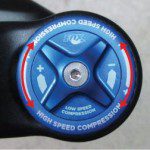 This controls how your fork compresses. Compression damping can be difficult to understand. If you’re not prepared to learn about compression damping then you needn’t get a fork that has adjustable compression damping.
This controls how your fork compresses. Compression damping can be difficult to understand. If you’re not prepared to learn about compression damping then you needn’t get a fork that has adjustable compression damping.
A lot of forks come with only one compression damping dial, often with pre-set levels of adjustment (a climbing setting, a general setting and a descending setting). This is a good for riders who want adjustability but don’t want to have to work it out for themselves.
Other forks have separate low speed and high speed compression.
Basically, low speed compression affects how the fork compresses during low speeds and/or low forces (braking, cornering, rider movement/pedalling) and high speed compression affects how the fork compresses during high speeds and/or large forces (rocks, roots, landings).
 Spring
Spring
This can mean either a metal coil spring or a sealed air chamber acting as a spring.
Air sprung forks save weight and offer more adjustability. Air sprung forks are infinitely adjustable for all rider weights. It’s a matter of attaching a shock pump to the air valve and pumping away. Shock pumps are usually supplied with the fork – but not always.
Metal coil springs are found on cheaper forks and on a lot of Downhill forks (where weight isn’t so much of an issue). Coil springs aren’t very adjustable for different rider weights. If you’re beyond the weight range of the supplied coil then you have to buy another coil that is suited to your weight.
Stiffness and weight
The final ‘feature’ of forks is stiffness and strength. The fatter the legs and bigger the axle, the stiffer and stronger the fork is. It will also be heavier.
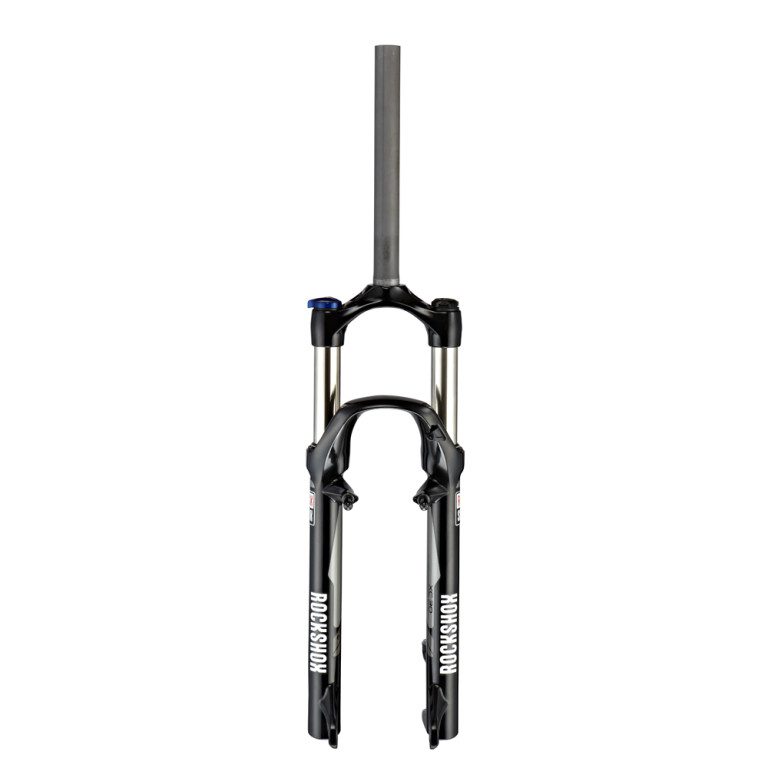
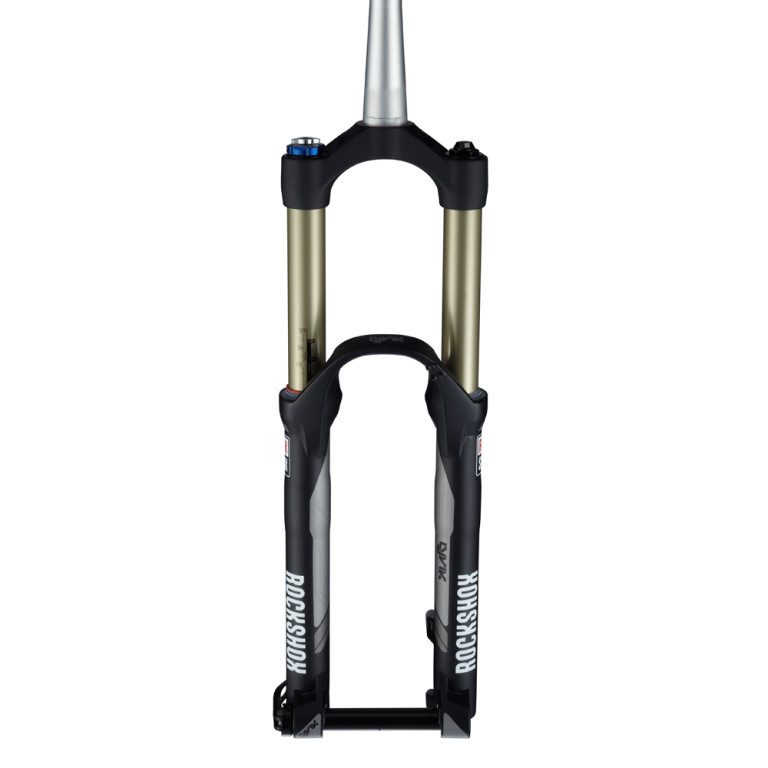
Fork stanchions range from 28mm up to 36mm. Fork axle range from 9mm QR through to 20mm bolt-thru. A 28mm stanchion QR-axle fork won’t be as stiff as a 36mm stanchion 20mm bolt-thru fork.
Which suspension fork should you buy?
Leisure riders should always check out the sale sections and try to pick up a slightly older model. Basic models from big brands are a safe bet. Forks haven’t changed immensely in the past few years so there’s bargains to be had with minimal negatives.
Regular riders should go for a fork with a decent amount of damping adjustability. You may not currently know much about suspension theory but it doesn’t take long to learn the basics. You should have a high performance fork that can be set-up how you like it. Some sort of compression damping should be on offer. There’s no need for lock-out on decent trail forks. Adjustable travel is nice if your riding involves extended periods of steep climbing.
Racers. XC racers may wish to forego damping adjustability in exchange for a lighter weight fork. They also may still benefit from a lock-out during attacking climbs or long drags of smooth terrain. Enduro racers should go for a fully-featured, strong-as-possible, light-as-possible fork ie. flipping expensive!

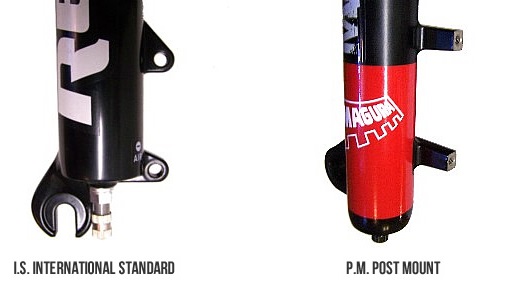 Disc brake mount
Disc brake mount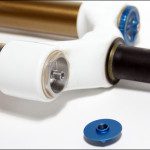 Spring
Spring